AQA > AQA Questions and Marking Scheme > A-level CHEMISTRY 7405/2 Paper 2 Organic and Physical Chemistry Mark scheme June 2022 (All)
A-level CHEMISTRY 7405/2 Paper 2 Organic and Physical Chemistry Mark scheme June 2022
Document Content and Description Below
A-level CHEMISTRY 7405/2 Paper 2 Organic and Physical Chemistry Mark scheme June 2022 Version: 1.0 Final Mark schemes... are prepared by the Lead Assessment Writer and considered, together with the relevant questions, by a panel of subject teachers. This mark scheme includes any amendments made at the standardisation events which all associates participate in and is the scheme which was used by them in this examination. AS and A-Level Chemistry Mark Scheme Instructions for Examiners 1. General The mark scheme for each question shows: • the marks available for each part of the question • the total marks available for the question • the typical answer or answers which are expected • extra information to help the examiner make his or her judgement and help to delineate what is acceptable or not worthy of credit or, in discursive answers, to give an overview of the area in which a mark or marks may be awarded. The extra information in the ‘Comments’ column is aligned to the appropriate answer in the left- hand part of the mark scheme and should only be applied to that item in the mark scheme. You should mark according to the contents of the mark scheme. If you are in any doubt about applying the mark scheme to a particular response, consult your Team Leader. At the beginning of a part of a question a reminder may be given, for example: where consequential marking needs to be considered in a calculation; or the answer may be on the diagram or at a different place on the script. In general the right-hand side of the mark scheme is there to provide those extra details which might confuse the main part of the mark scheme yet may be helpful in ensuring that marking is straightforward and consistent. The use of M1, M2, M3 etc in the right-hand column refers to the marking points in the order in which they appear in the mark scheme. So, M1 refers to the first marking point, M2 the second marking point etc. 2. Emboldening 2.1 In a list of acceptable answers where more than one mark is available ‘any two from’ is used, with the number of marks emboldened. Each of the following bullet points is a potential mark. 2.2 A bold and is used to indicate that both parts of the answer are required to award the mark. 2.3 Alternative answers acceptable for a mark are indicated by the use of OR. Different terms in the mark scheme are shown by a / ; eg allow smooth / free movement. 3. Marking points 3.1 Marking of lists This applies to questions requiring a set number of responses, but for which students have provided extra responses. The general ‘List’ principle to be followed in such a situation is that ‘right + wrong = wrong’. Each error / contradiction negates each correct response. So, if the number of error / contradictions equals or exceeds the number of marks available for the question, no marks can be awarded. However, responses considered to be neutral (often prefaced by ‘Ignore’ in the mark scheme) are not penalised. example, in a question requiring 2 answers for 2 marks: Correct answers Incorrect answers (i.e. incorrect rather than neutral) Mark (2) Comment 1 0 1 1 1 1 They have not exceeded the maximum number of responses so there is no penalty. 1 2 0 They have exceeded the maximum number of responses so the extra incorrect response cancels the correct one. 2 0 2 2 1 1 2 2 0 3 0 2 The maximum mark is 2 3 1 1 The incorrect response cancels out one of the two correct responses that gained credit. 3 2 0 Two incorrect responses cancel out the two marks gained. 3 3 0 3.2 Marking procedure for calculations Full marks should be awarded for a correct numerical answer, without any working shown, unless the question states ‘Show your working’ or ‘justify your answer’. In this case, the mark scheme will clearly indicate what is required to gain full credit. If an answer to a calculation is incorrect and working is shown, process mark(s) can usually be gained by correct substitution / working and this is shown in the ‘Comments’ column or by each stage of a longer calculation. 3.3 Errors carried forward, consequential marking and arithmetic errors Allowances for errors carried forward are most likely to be restricted to calculation questions and should be shown by the abbreviation ECF or consequential in the marking scheme. An arithmetic error should be penalised for one mark only unless otherwise amplified in the marking scheme. Arithmetic errors may arise from a slip in a calculation or from an incorrect transfer of a numerical value from data given in a question. 3.4 Equations In questions requiring students to write equations, state symbols are generally ignored unless otherwise stated in the ‘Comments’ column. Examiners should also credit correct equations using multiples and fractions unless otherwise stated in the ‘Comments’ column. 3.5 Oxidation states In general, the sign for an oxidation state will be assumed to be positive unless specifically shown to be negative. 3.6 Interpretation of ‘it’ Answers using the word ‘it’ should be given credit only if it is clear that the ‘it’ refers to the correct subject. 3.7 Phonetic spelling The phonetic spelling of correct scientific terminology should be credited unless there is a possible confusion with another technical term or if the question requires correct IUPAC nomenclature. 3.8 Brackets (…..) are used to indicate information which is not essential for the mark to be awarded but is included to help the examiner identify the sense of the answer required. 3.9 Ignore / Insufficient / Do not allow Ignore or insufficient is used when the information given is irrelevant to the question or not enough to gain the marking point. Any further correct amplification could gain the marking point. Do not allow means that this is a wrong answer which, even if the correct answer is given, will still mean that the mark is not awarded. 3.10 Marking crossed out work Crossed out work that has not been replaced should be marked as if it were not crossed out, if possible. Where crossed out work has been replaced, the replacement work and not the crossed out work should be marked. 3.11 Reagents The command word “Identify”, allows the student to choose to use either the name or the formula of a reagent in their answer. In some circumstances, the list principle may apply when both the name and the formula are used. Specific details will be given in mark schemes. The guiding principle is that a reagent is a chemical which can be taken out of a bottle or container. Failure to identify complete reagents will be penalised, but follow-on marks (e.g. for a subsequent equation or observation) can be scored from an incorrect attempt (possibly an incomplete reagent) at the correct reagent. Specific details will be given in mark schemes. For example, no credit would be given for • the cyanide ion or CN– when the reagent should be potassium cyanide or KCN; • the hydroxide ion or OH– when the reagent should be sodium hydroxide or NaOH; • the Ag(NH ) + ion when the reagent should be Tollens’ reagent (or ammoniacal silver nitrate). In this example, no credit is given for the ion, but credit could be given for a correct observation following on from the use of the ion. Specific details will be given in mark schemes. In the event that a student provides, for example, both KCN and cyanide ion, it would be usual to ignore the reference to the cyanide ion (because this is not contradictory) and credit the KCN. Specific details will be given in mark schemes. 3.12 Organic structures Where students are asked to draw organic structures, unless a specific type is required in the question and stated in the mark scheme, these may be given as displayed, structural or skeletal formulas or a combination of all three as long as the result is unambiguous. In general • Displayed formulae must show all of the bonds and all of the atoms in the molecule, but need not show correct bond angles. • Skeletal formulae must show carbon atoms by an angle or suitable intersection in the skeleton chain. Functional groups must be shown and it is essential that all atoms other than C atoms are shown in these (except H atoms in the functional groups of aldehydes, secondary amines and N-substituted amides which do not need to be shown). • Structures must not be ambiguous, e.g. 1-bromopropane should be shown as CH3CH2CH2Br and not as the molecular formula C3H7Br which could also represent the isomeric 2-bromopropane. • Bonds should be drawn correctly between the relevant atoms. This principle applies in all cases where the attached functional group contains a carbon atom, e.g nitrile, carboxylic acid, aldehyde and acid chloride. The carbon-carbon bond should be clearly shown. Wrongly bonded atoms will be penalised on every occasion. (see the examples below) • The same principle should also be applied to the structure of alcohols. For example, if students show the alcohol functional group as C ─ HO, they should be penalised on every occasion. • Latitude should be given to the representation of C ─ C bonds in alkyl groups, given that CH3─ is considered to be interchangeable with H3C─ even though the latter would be preferred. • Similar latitude should be given to the representation of amines where NH2─ C will be allowed, although H2N─ C would be preferred. • Poor presentation of vertical C ─ CH3 bonds or vertical C ─ NH2 bonds should not be penalised. For other functional groups, such as ─ OH and ─ CN, the limit of tolerance is the half-way position between the vertical bond and the relevant atoms in the attached group. By way of illustration, the following would apply. CH3 C C CH3 C CH3CH2 OH C C OH allowed allowed not allowed not allowed not allowed NH2 C C NH2 NH2 NH2 NO2 allowed allowed allowed allowed not allowed CN C C CN COOH C C COOH C COOH not allowed not allowed not allowed not allowed not allowed CHO C C CHO C CHO COCl C C COCl not allowed not allowed not allowed not allowed not allowed • Representation of CH2 by CH2 will be penalised • Some examples are given here of structures for specific compounds that should not gain credit (but, exceptions may be made in the context of balancing equations) CH3COH for ethanal CH3CH2HO for ethanol OHCH2CH3 for ethanol C2H6O for ethanol CH2CH2 for ethene CH2.CH2 for ethene CH2:CH2 for ethene • Each of the following should gain credit as alternatives to correct representations of the structures. CH2 = CH2 for ethene, H2C=CH2 CH3CHOHCH3 for propan-2-ol, CH3CH(OH)CH3 [Show More]
Last updated: 1 year ago
Preview 1 out of 18 pages

Buy this document to get the full access instantly
Instant Download Access after purchase
Add to cartInstant download
We Accept:

Also available in bundle (2)

AQA A LEVEL CHEMISTRY PAPER 1 ,2 AND 3 JUNE 2022 FINAL QUESTION PAPERS AND MARK SCHEMES.
AQA A LEVEL CHEMISTRY PAPER 1 ,2 AND 3 JUNE 2022 FINAL QUESTION PAPERS AND MARK SCHEMES.
By examstore001 1 year ago
$80
6

AQA A LEVEL CHEMISTRY PAPER 2 JUNE 2022 FINAL QUESTION PAPER AND MARK SCHEME.
AQA A LEVEL CHEMISTRY PAPER 2 JUNE 2022 FINAL QUESTION PAPER AND MARK SCHEME.
By examstore001 1 year ago
$28
2
Reviews( 0 )
$17.00
Document information
Connected school, study & course
About the document
Uploaded On
May 17, 2023
Number of pages
18
Written in
Additional information
This document has been written for:
Uploaded
May 17, 2023
Downloads
0
Views
55

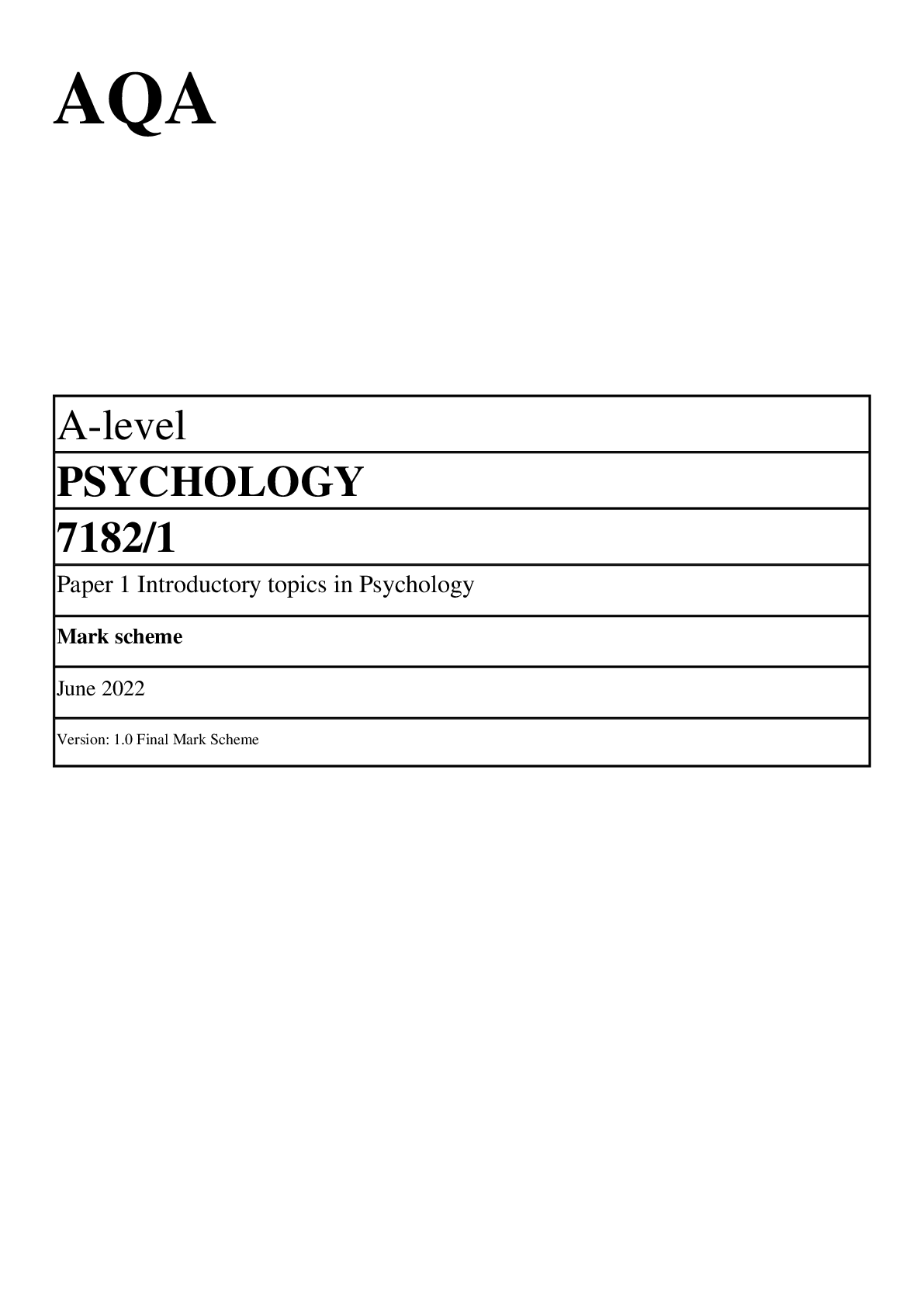
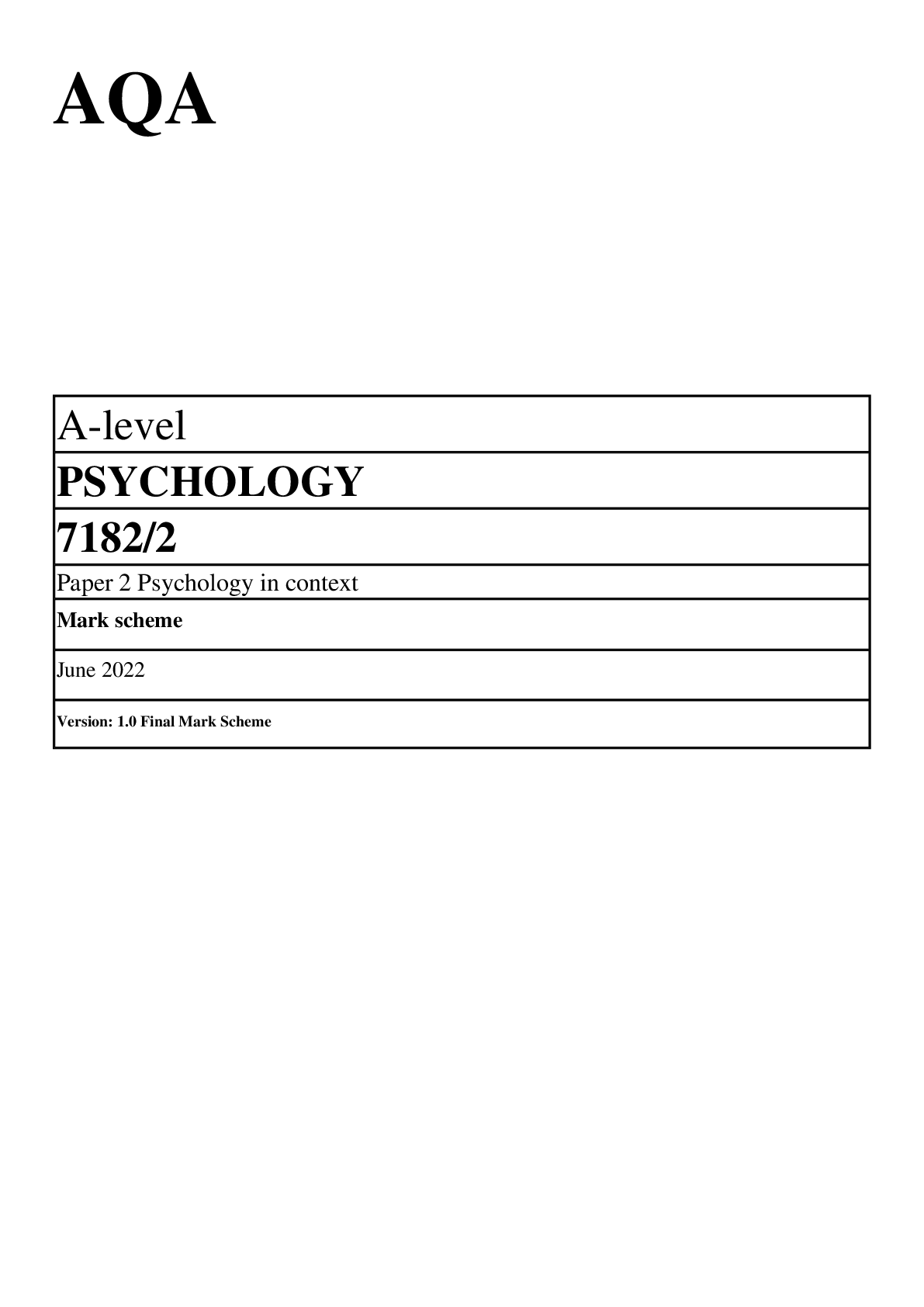
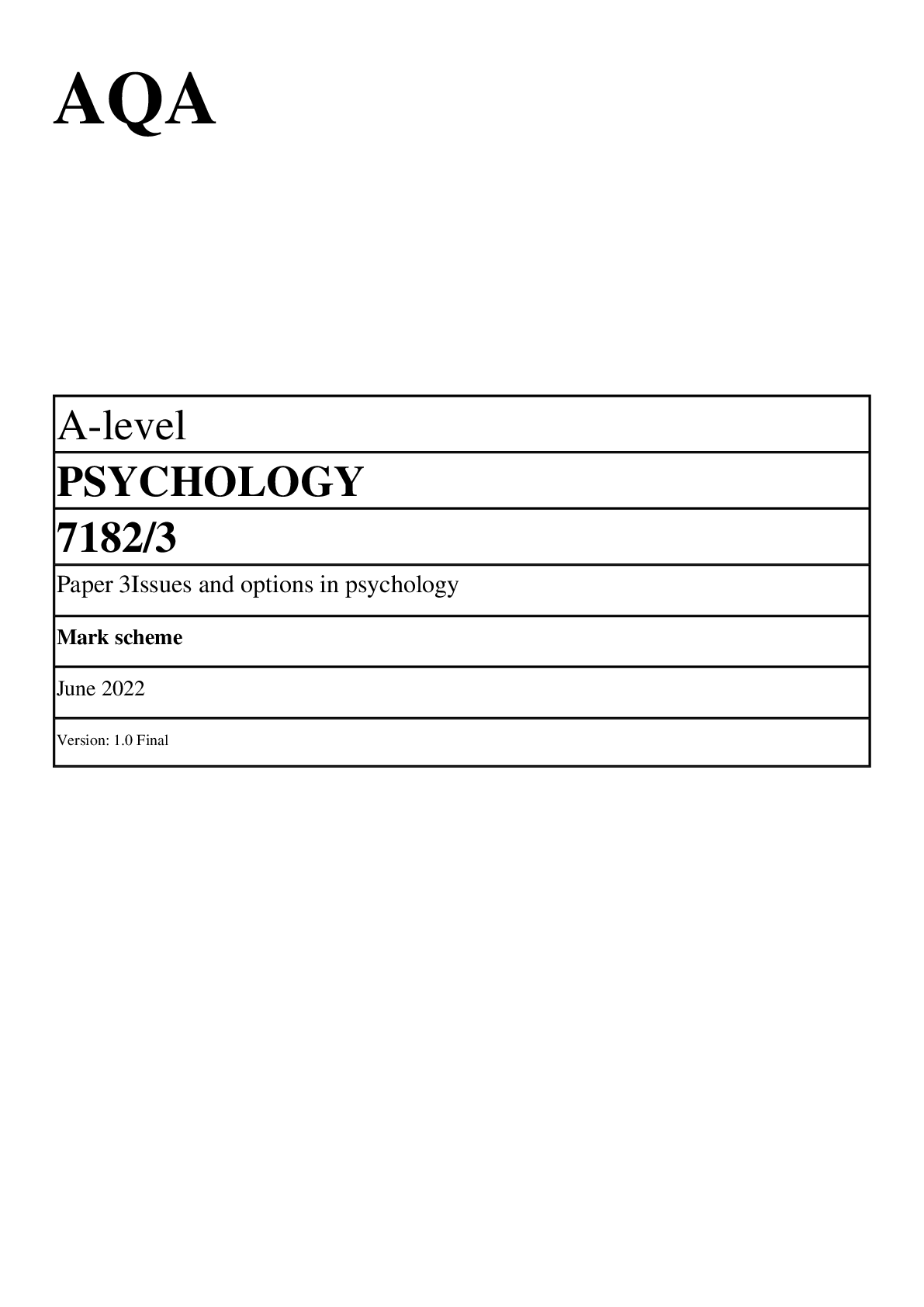
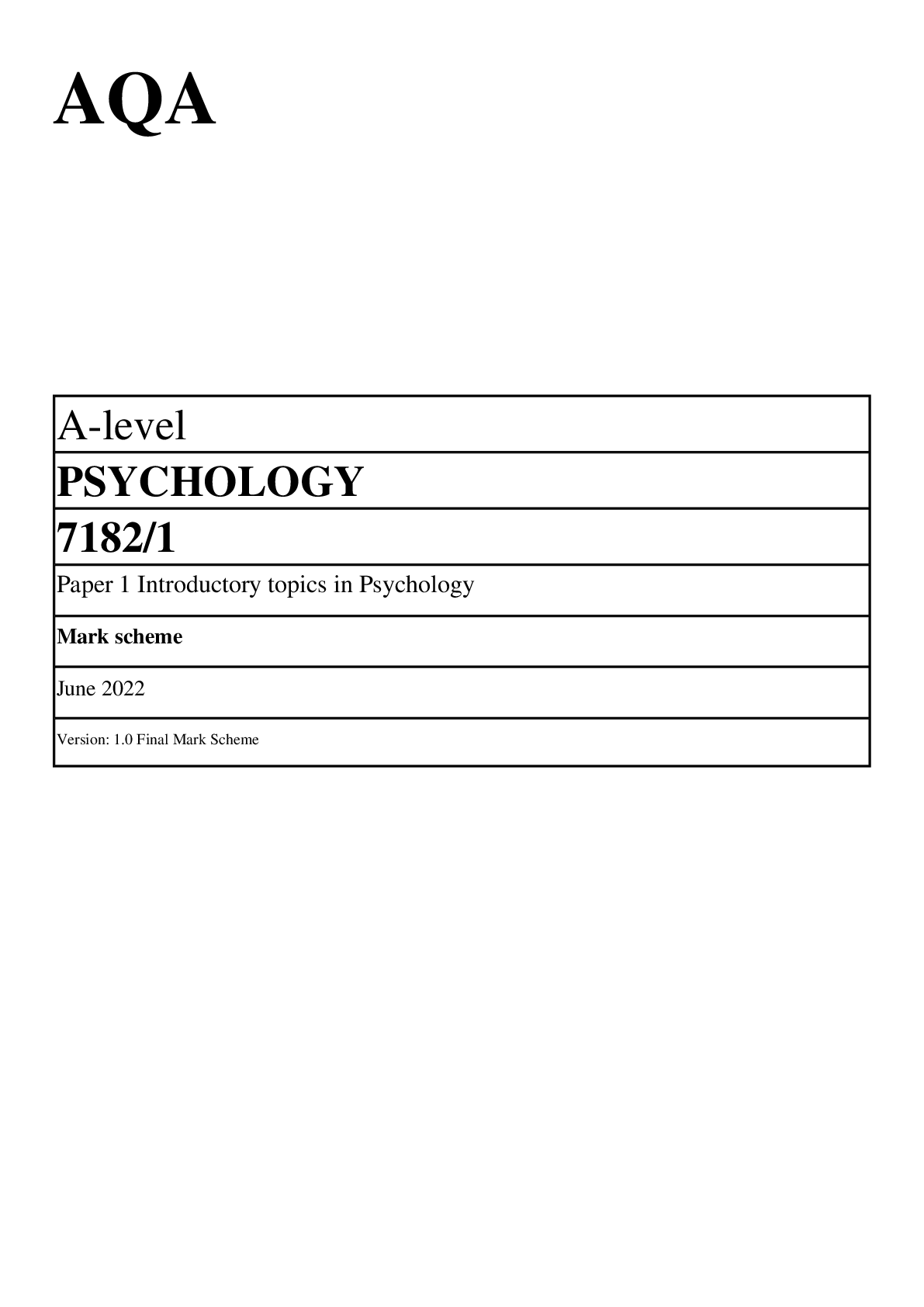

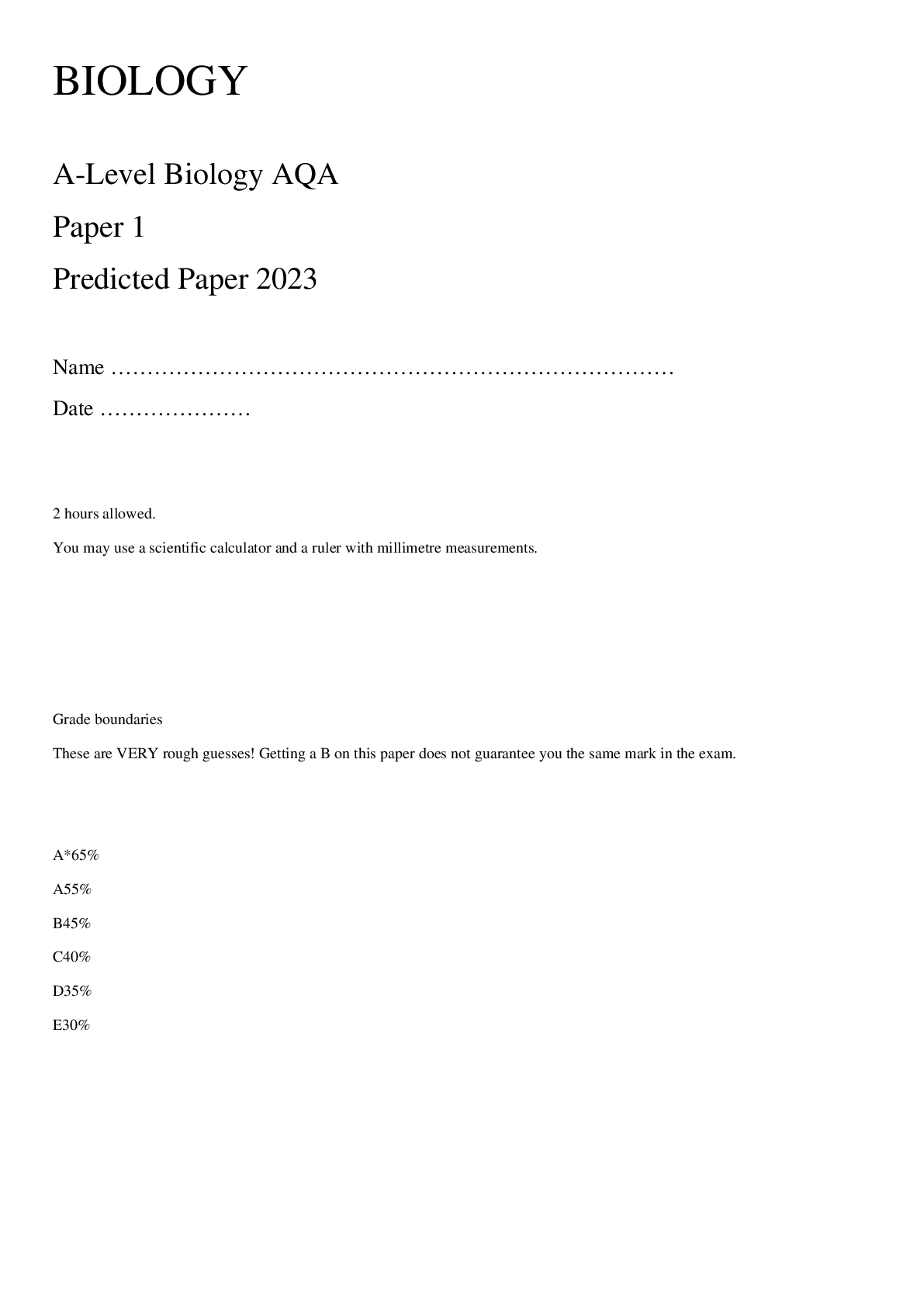
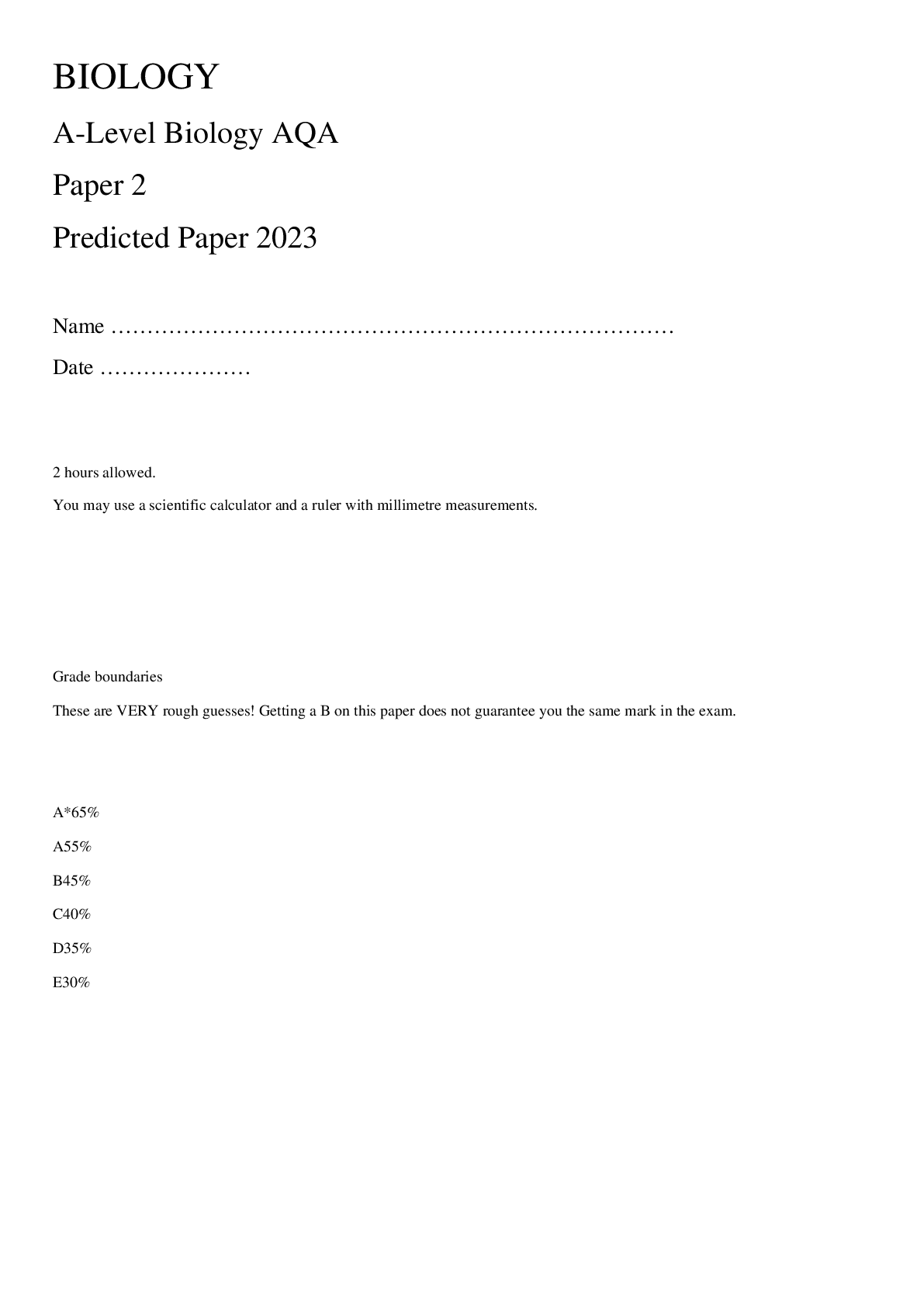

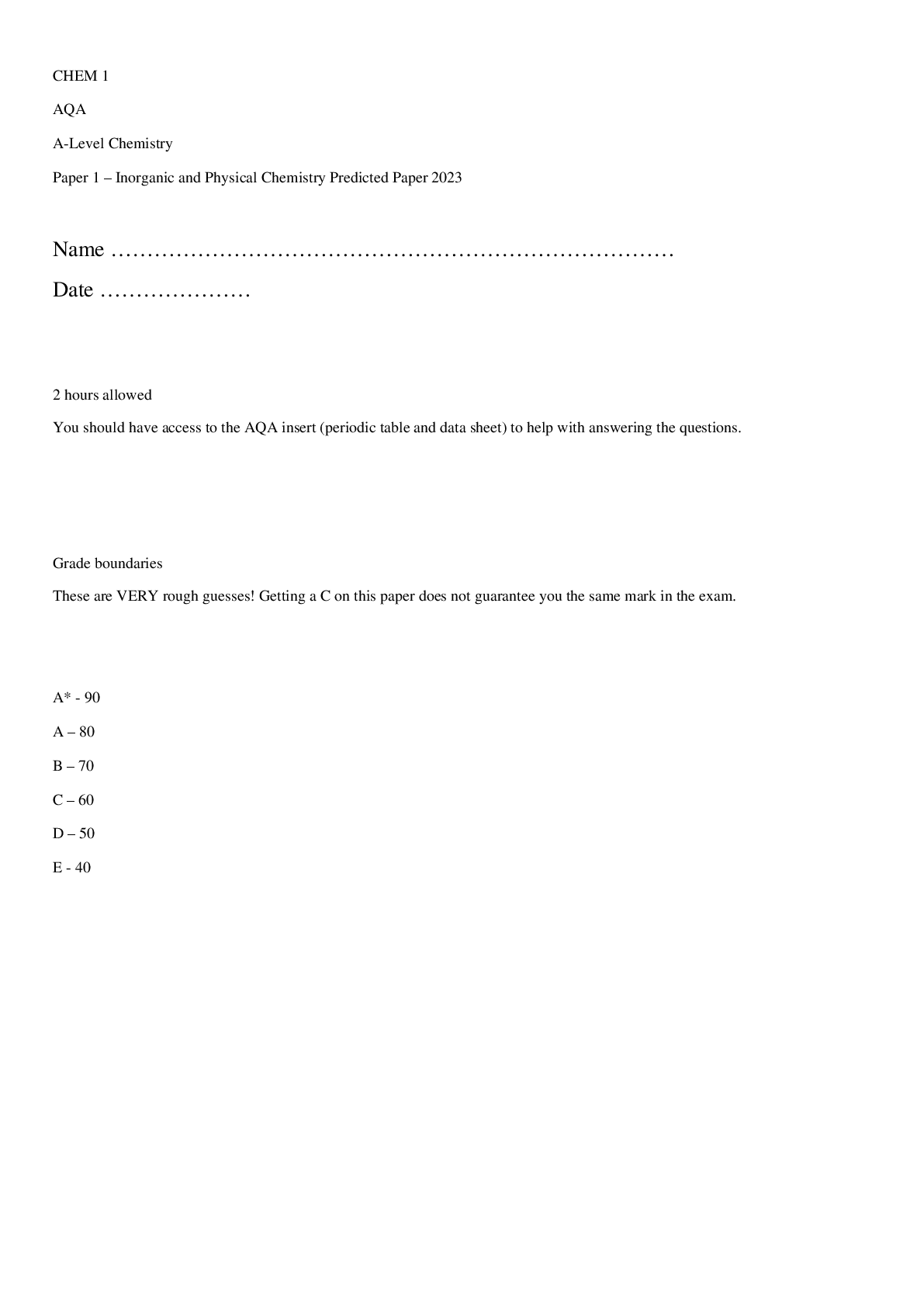
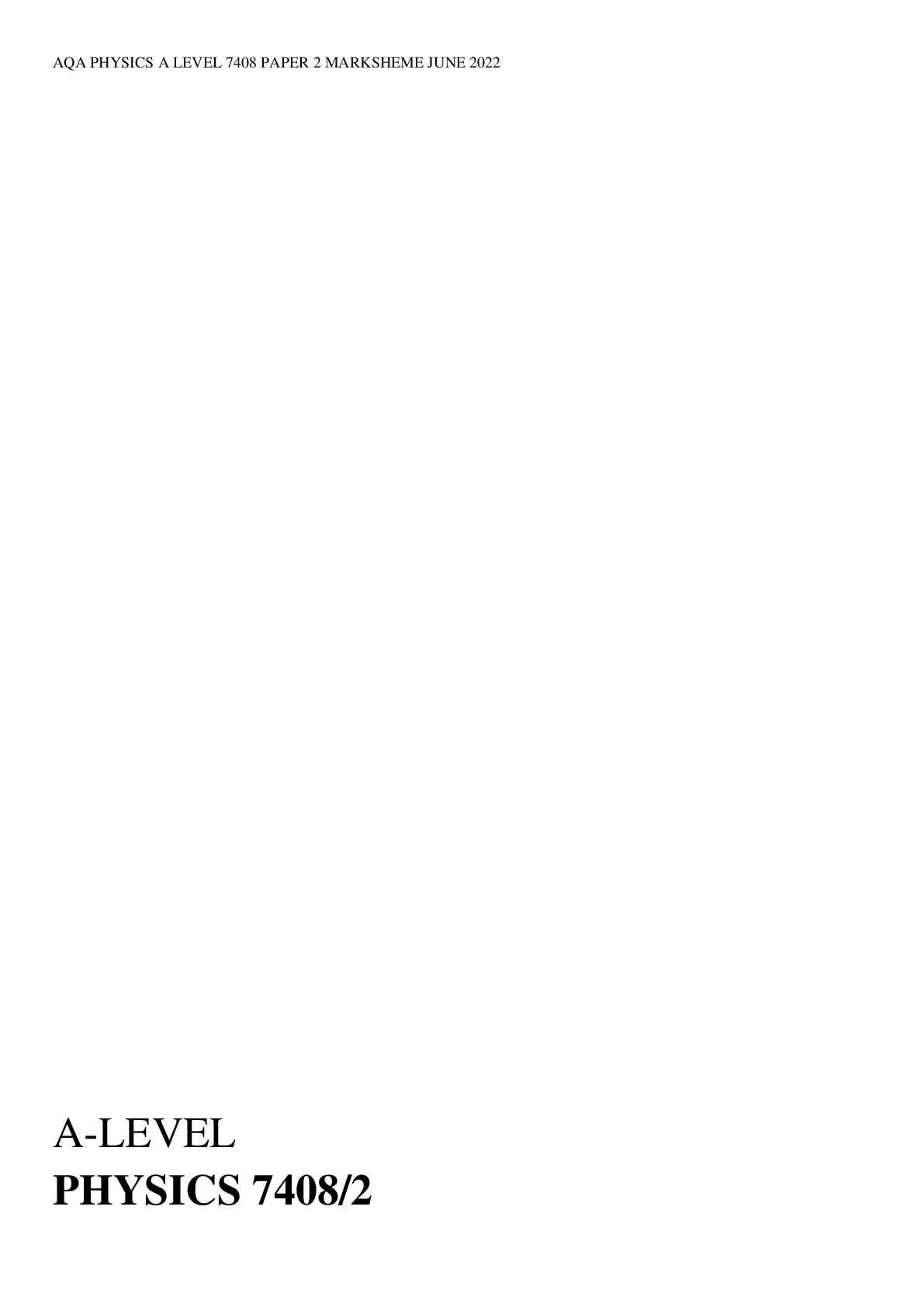



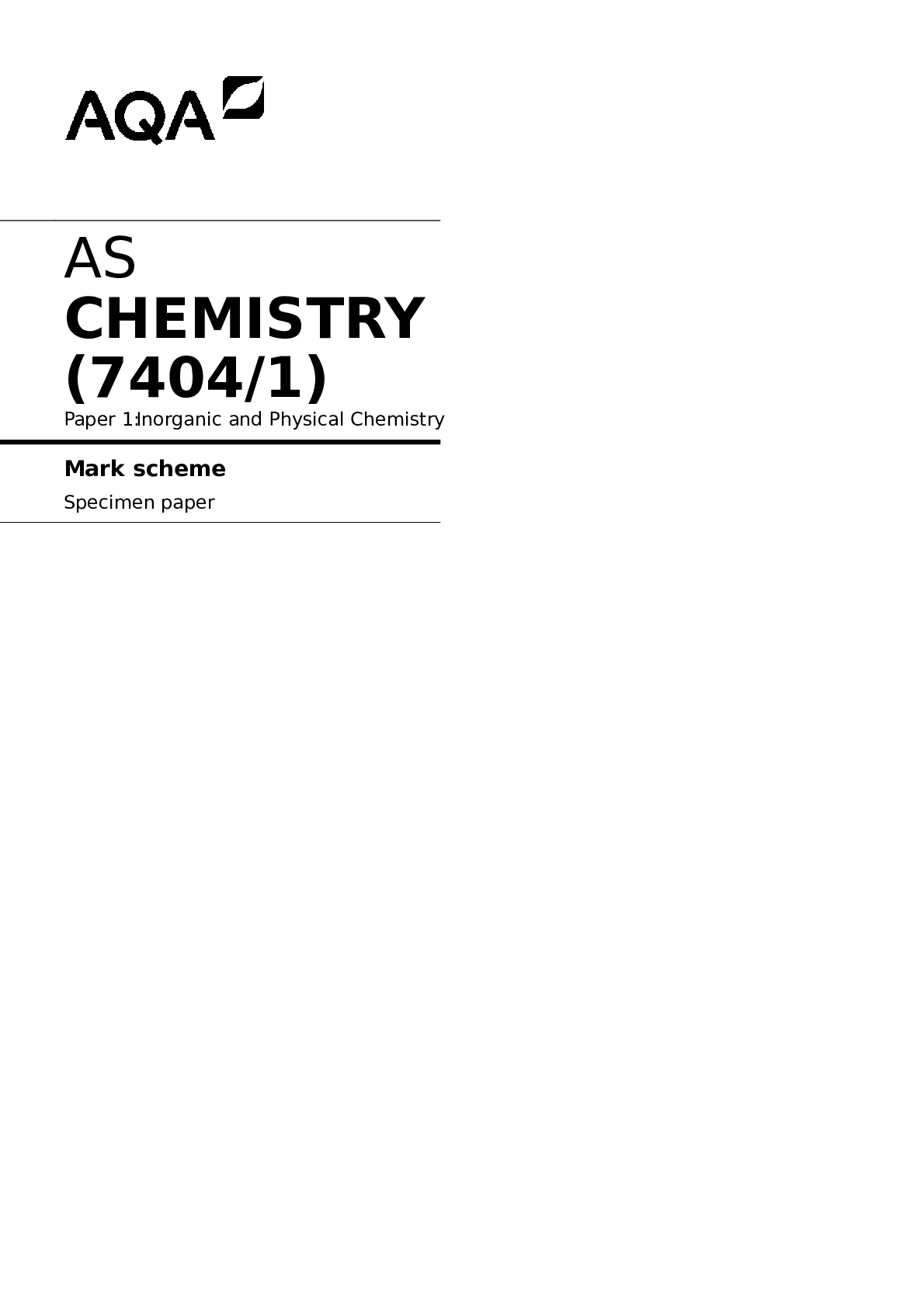



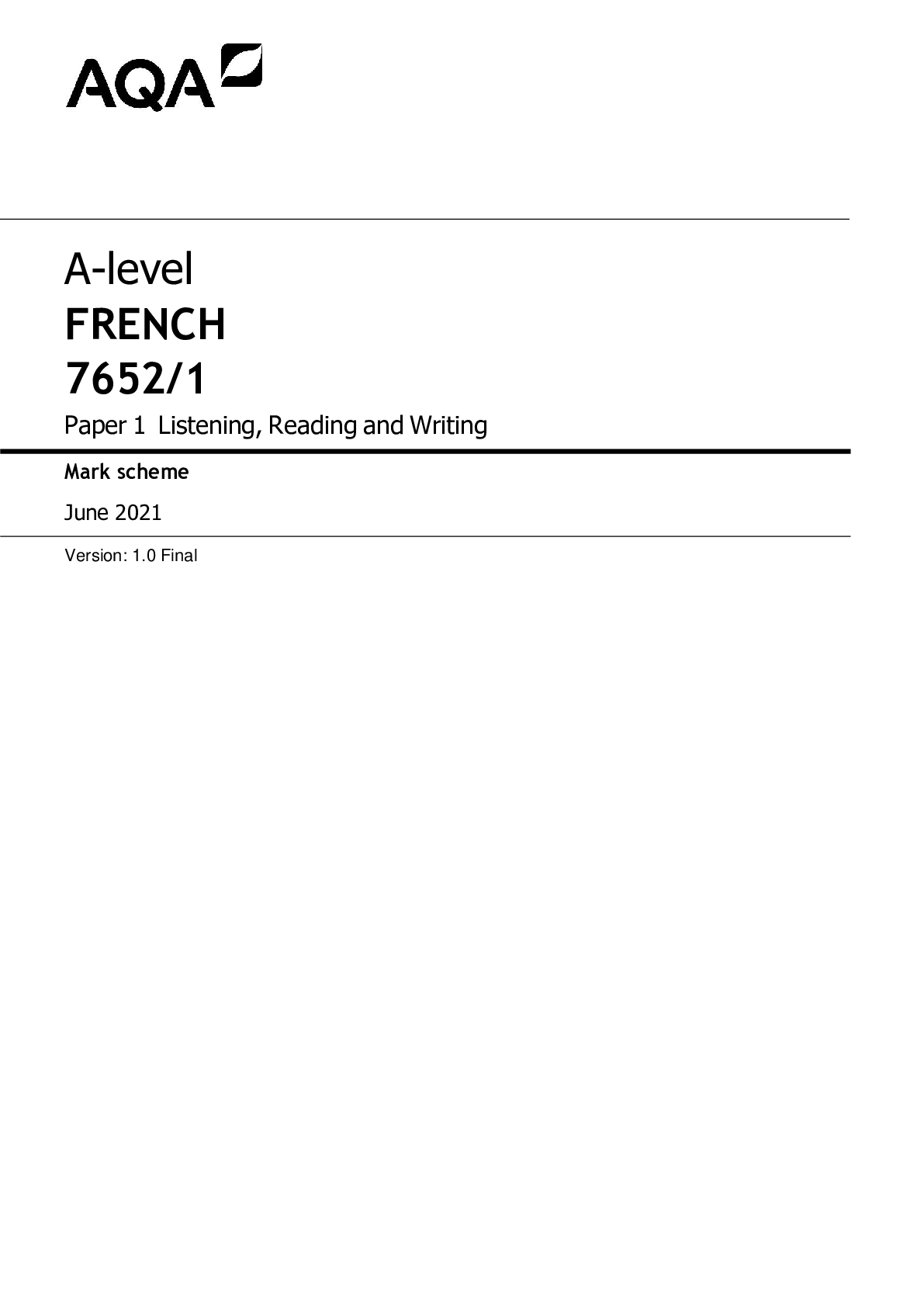
.png)

